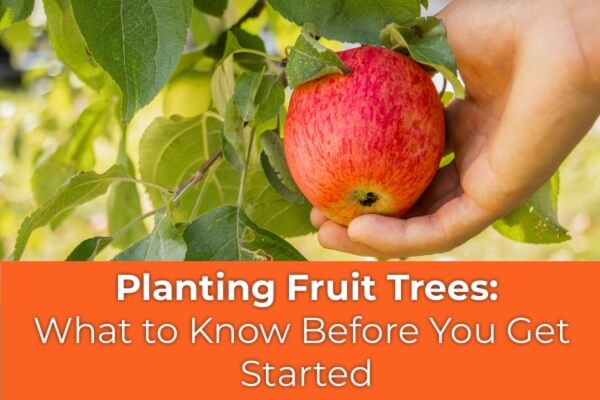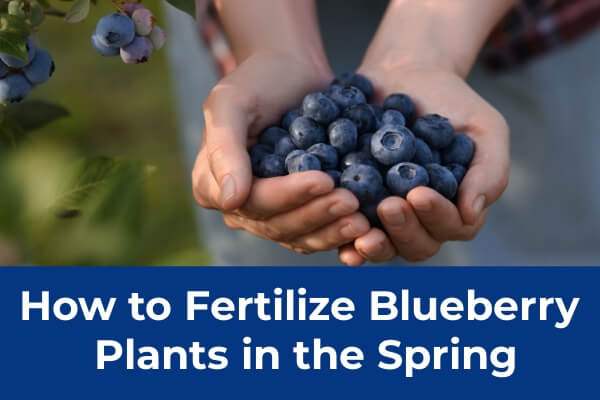Table of Contents
Planning Next Year’s Fruit Tree Garden
Fall is a season for dreamers. It’s that in-between time when summer’s heat and sunshine give way to the quietness of cooler days, and that's when the garden finally exhales and can take a short break. Leaves fall, days shorten, and growers everywhere start to imagine what next year’s fruit tree garden might look like. Fall is the season of reflection before the new year comes. It’s also the perfect time to plan ahead for a dream fruit tree garden that rewards you all year long.
At Four Winds Growers, we like to think of fall as the gardener’s creative season. The soil might be resting, but our imaginations are wide awake. This is when you sketch out your orchard dreams, plan your future harvests, and start thinking about how to make next year’s garden productive as well as harmonious. What a dream it would be to have something is always in bloom, and something is always ready to harvest. Well, that is a vey real possibility if your growing zone will allow!
Here are some tips to start growing fruit every season.
Secret to Year-Round Harvests
Experienced growers know that fruit ripens in waves and in its own season. The trick is to select varieties that stagger their production, so that as one fruiting season winds down, another begins. Planning your garden around these cycles can turn a few fruit trees into a year-round source of joy.
Here’s what that it can look like in practice:
Winter and Early Spring: During this time, known as citrus season, you can grow lemons, mandarins, oranges, and kumquats to bring brightness when little else is growing.
Late Spring to Early Summer: Early peaches begin to ripen, followed by cherries and apricots. These fruits bridge the gap between cool-season citrus and the summer crop of fruits.
Mid-Summer: This is peak stone fruit season, and includes plums, nectarines, and peaches all come into their own, followed closely by figs that ripen on sun-warmed branches.
Late Summer into Fall: Apples, pears, and pomegranates shine now, rounding out the growing season with crisp, sweet flavors that store beautifully.
By blending fruit trees with different ripening windows, you can create a rhythm in your garden that keeps the table full almost every month of the year.
Start Dreaming Now: Fall Is the Best Time to Plan
The fall season is ideal for garden planning for a few reasons. For one, your recent harvest is still fresh in your mind and you know which fruits you loved most and which varieties you’d like to add. It’s also a quieter time in the garden, giving you space to step back and think about the bigger picture and what next year and beyond may look like.
Start with these three questions:
What’s missing from your harvest calendar?
Maybe you have an abundance of summer fruit but nothing to pick in winter. Adding a citrus tree like a lemon or mandarin can fill that gap beautifully.What space do you have available?
Many fruit trees can be kept small with pruning or grown in large containers. Citrus, figs, olives and pomegranates are especially good for small-space or patio growers. For those with in-ground space, avocados and deciduous fruit trees provide fruit and shade.What kind of gardener do you want to be next year and in the future?
Fall is the time to imagine your dream garden lifestyle. Do you want to experiment with new techniques? Focus on container gardening? Create a pollinator-friendly orchard? The choices you make now set the tone for the coming year.
Citrus: The Heart of Winter
No fruit garden feels complete without citrus. These evergreen trees provide color, fragrance, and fruit during the cool months when the rest of the garden rests.
Plan your citrus season to extend from late fall into spring:
Early Season: Owari Satsuma mandarins begin ripening in October/November.
Mid-Season: Meyer lemons, mandarins and Washington Navel oranges are winter staples.
Late Season: Cara Cara and Valencia oranges keep the harvest going into spring.
Feed regularly with Romeo Plant Food or G&B Organics Fruit and Citrus Tree Fertilizer to support healthy growth and strong fruit production. With proper planning, your citrus trees will light up your garden with fruit for months.
Figs: The Sweet Taste of Summer
If citrus is the star of winter, figs are the treasure of summer. Their honey sweet flavor, lush leaves, and forgiving nature make them one of the easiest fruit trees to grow. Fig trees are self-pollinating, drought-tolerant, and even ideal for container growing.
Plant early and late-ripening varieties to enjoy a long season:
Black Mission and Brown Turkey figs produce early.
Panache Tiger and Violette de Bordeaux extend the harvest into late summer.
For container-grown fig trees, use DIY Primo Potting Soil to promote healthy roots and steady moisture. A single tree can provide more fruit than you think.
Apples and Stone Fruit: The Grand Finale
When fall arrives, apples signal the final act of the growing year. Crisp, sweet, and full of flavor, they are the reward for months of care.
Mix early and late-ripening apple trees for a longer season. Varieties like Anna, Fuji, and Granny Smith each ripen at different times, extending your harvest window. Combine apples with stone fruit trees like plums, nectarines, and peaches for a balanced orchard that carries you from summer through fall.
The Bare Root Fruit Tree Advantage
We sell our deciduous fruit trees, such as apples, peaches, and cherries, as bare root fruit trees in winter, and then potted in the spring. Bare root fruit trees are available for pre-order in the fall and delivered starting in January of the following year, just before they break dormancy. This is the best time to plant a bare root fruit tree. Fall is the perfect time to plan and reserve your favorites before they sell out.
Bare root planting offers a huge advantage: your trees establish roots during the cool, rainy season and burst into growth come spring. Planning now ensures your fruit garden gets the best possible start.
Designing a Fruit Garden That Feeds You All Year
Think of your garden as a living, edible landscape. A thoughtful fruit garden design layers color, texture, and harvest timing:
Citrus trees in containers near patios for their blossom fragrance and winter beauty.
Fig and stone fruit trees in sunny, well-drained spots for summer harvests.
Apples and pomegranates for fall color and flavors.
Blueberries and raspberries tucked in as underplantings for early summer sweetness.
By staggering your planting times and mixing evergreen and deciduous trees, your space will offer both beauty and food through every season.
Dream Now, Grow Soon
As the garden slows down, it’s time to dream big! Fall is when growers become visionaries and start imagining new layouts, researching varieties, and planning for harvests that never truly end.
At Four Winds Growers, we believe fall belongs to the dreamers and to gardeners who can look at bare branches and see blossoms, who can already taste next summer’s fruit. So grab a cup of something warm, pull out your notebook, and start your fruit garden planning today. Your future self, your future harvest and your future landscape will thank you!




